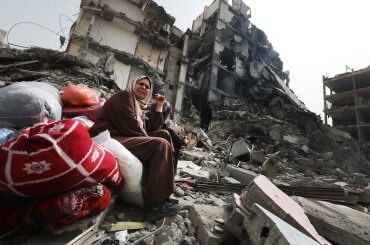Iranian-American realist scholar Trita Parsi, a protege of Fukuyama, has been making the rounds of the left to talk about his new book Treacherous Alliance: the Secret Dealings of Israel, Iran and the U.S. The book is extremely powerful. After Parsi guest-blogged on Tony Karon’s blog, his call for dialogue between the U.S. and Iran to neutralize tensions in the Middle East has been taken up, ardently, by Richard Silverstein, It is a great pity that Parsi is not getting more airtime in the mainstream media; it is a sign of the weakness of the left and the continuing orthodoxy in the mainstream, that these ideas are not being discussed widely.
I’m 2/3 of the way through his book, but want to convey my excitement as a reader. In a nutshell, Parsi says that Israel and Iran have been working secretly together and against one another from time immemorial in a regional struggle for power that brings in the Arab world (Baghdad) and the the superpowers, too. A great deal of his understanding comes from Israelis, whom Parsi has tirelessly interviewed. (I never accepted the charge against Walt and Mearsheimer, that they failed to talk to real people; it was not necessary to their project; but Parsi distinguishes himself by doing just that.)
Here is a brilliant take from a former Mossad boss, about why he is "optimistic" about Iranian-Israeli relations in the future.
Whatever the name of Iran–Pars, Elam, Media–and whatever the name of Iraq… there was always a rivalry and sometimes a war… [Cyrus the Great] knew that there is a common interest between the two sides of the Middle East–Iran and Israel. That is why Koroush let Ezra and Nehemja come back and rebuild the temple…Iran is Moslem but not Arab, and [to keep this balance] Iran needs another [non-Arab] people [who share that] common interest.
Parsi can point to countless times over the years in which Iran, even under the Shah, made threatening statements about eliminating Israel–a cancer, and so forth–even as it secretly dealt with her. I am not trying to diminish Ahmadinejad’s threats; the significance of Parsi’s work is that he contextualizes them, and shows how the rhetoric has waxed and waned, as one side got the bomb, or defeated Iraq, and so forth.
The U.S. and the Arab world have been played by both sides. For instance, Iran feared during the Rabin era, in 1994, that a peace deal was about to eventuate between Israel and Syria and the Palestinians– feared that the Arab world would turn against Iran once it had lost its main enemy, Israel. And so it did all it could to upset the deal by funding and pushing terror by Islamists in the Palestinian rejectionist camp, Hamas.
Bad bad Iran; yes. But Parsi shows that Islamic terror was in some ways a fulfillment of Israeli rhetoric. When the Cold War ended five years earlier, the Israelis understood that they would be losing value to the United States as an ally against the Soviet Union in the Middle East. During the Cold War Israel had secretly traded with Iran and urged the U.S. to make nice with Iran–even as Iran called Israel a "tumor" and held Americans hostage. But ten years on, Israel feared a loss of U.S. sponsorship; and the Iranian threat to the west rose in Israeli rhetoric.
That brings me to the most staggering statement in Parsi’s book, a comment by Efraim Inbar, an Israeli at the conservative Begin-Sadat Center in Jerusalem. He told Parsi that Rabin overplayed the Iranian threat.
"There was a feeling in Israel that because of the end of the Cold War, relations with the U.S. were cooling and we needed some new glue for the alliance… And the new glue… was radical Islam. And Iran was radical Islam."
And the Israel lobby went to work in the U.S. to push this idea; and it became the American religion under Bush. Yes, of course: radical Islam is a real threat. A phantom didn’t take down the World Trade Center. The issue here is to what extent American fears, and foreign policy, are being driven by local forces that are doing their utmost to gain the upper hand. Why aren’t we talking about this? Why isn’t Parsi’s "glue" revelation sparking front-page investigative series in the Washington Post and N.Y. Times?

